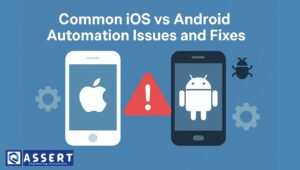In today’s digital landscape, APIs (Application Programming Interfaces) are the backbone of interconnected applications. From mobile apps to complex enterprise systems, seamless communication between services depends on reliable APIs. That’s why API testing is not just a checkbox—it’s a critical component of delivering stable, high-quality software.
The best practices for API testing to help you build robust, secure, and scalable integrations.
Why API Testing Matters
API testing verifies that systems communicate correctly at the service level. This ensures:
- Faster feedback cycles during development
- Early detection of integration issues
- Improved test coverage, even before the UI is complete
- Better performance and security validation
Best Practices for
1. Understand the API Specifications
Before you start testing, review the API documentation (OpenAPI/Swagger, Postman collections, etc.). Understand:
- Request/response formats
- Authentication methods
- Rate limits and error codes
This ensures your test cases are aligned with real-world usage.
2. Automate Early and Often
Automated tests provide faster feedback and consistency. Integrate API tests into your CI/CD pipeline using tools like:
- Postman + Newman
- REST Assured (Java)
- Supertest (JavaScript)
- Pytest + Requests (Python)
- SoapUI for SOAP or REST APIs
Start with basic tests and scale to cover edge cases, performance, and security scenarios.
3. Test All Layers: CRUD, Auth, and Beyond
A robust API test suite should include:
- CRUD operations (Create, Read, Update, Delete)
- Authentication and authorization checks (e.g., token expiry, role-based access)
- Boundary conditions and error responses
- Data integrity validation
4. Use Dynamic and Data-Driven Testing
Avoid hard-coded values. Use parameterization and data-driven testing to cover more scenarios:
- Test with varied data sets
- Validate with valid, invalid, and edge-case inputs
- Store test data separately (CSV, JSON, Excel, databases)
5. Validate Response Content and Structure
Don’t just check for status codes. Validate:
- Response schema using JSON Schema validators
- Data correctness and field types
- Response time thresholds
6. Handle Authentication Gracefully
APIs often use OAuth, API keys, JWT, etc. Your tests should:
- Automatically retrieve tokens
- Handle token refresh logic
- Test unauthorized and forbidden scenarios
7. Include Negative and Security Testing
It’s not enough to test expected behavior. Include tests for:
- Invalid requests and data types
- Injection attacks (SQL, XML, etc.)
- Broken authentication or misconfigurations
8. Monitor and Log Everything
Capture:
- Request/response payloads
- Headers
- Timestamps and latency
- Error messages
Detailed logs help with debugging and auditing.
9. Performance and Load Testing
APIs under high load can behave differently. Use tools like JMeter, Gatling, or k6 to simulate concurrent users and check:
- Response times under stress
- Rate limits and throttling
- System behavior under load
10. Keep Tests Maintainable
Structure your tests well:
- Modularize and reuse common functions
- Use consistent naming and tagging
- Maintain version control of test scripts
- Keep test documentation up to date




